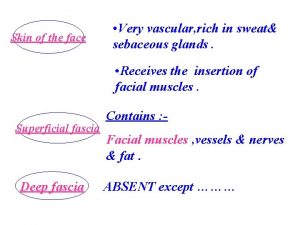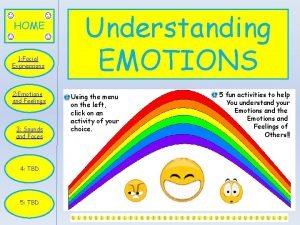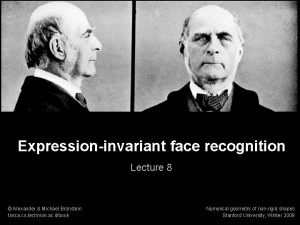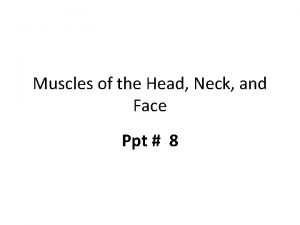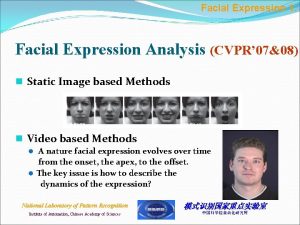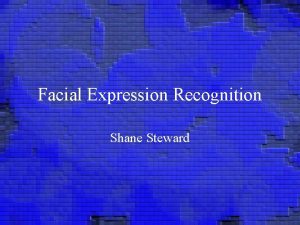Neural correlates of facial expression perception Using adaptation




- Slides: 4

Neural correlates of facial expression perception: Using adaptation to shift the emotion perceived in unambiguous expressions Phil Pell Anne Richards Marty Sereno

Background • Pell and Richards (submitted) found that the emotion perceived in even seemingly ‘unambiguous’ expressions can be modified using adaptation Post Fear adaptation 100% Fear 70% Disgust 100% Disgust Post Disgust adaptation Test morphs Adaptation face Fear Disgust Fear Condition Fear perceived as Disgust Fear perceived as Fear Disgust perceived as Disgust

Design: • Faces from two different continua: Fear-Disgust and Disgust-Joy (1 male and 1 female face for each) • Each set of 40 morphs (fear, disgust, joy, disgust) is viewed after adaptation to one end-point face (i. e. 100% face) or the other • Gives us 8 conditions - each set of faces perceived as one of two emotions • Up to 40 trials per condition - depends on how effective the adaptation effect is (should vary from 70 -90%) Hypotheses: • Expect to see enhanced activity in the insula when subjects perceive disgust faces; irrespective of the test stimulus • Possible (but unlikely) that the amygdala and ventral striatum will show enhanced activity to fear and joy respectively • Look for a conjunction between different cross-boundary shifts

Proposed Study • 16 -20 normal, healthy volunteers • Partial brain f. MRI coving all key areas and whatever else is possible within 2 s (TR: 2 s, TE: 40 ms, 3. 23 mm resolution) • 2 runs of 8 blocks - 35 adaptation trials 20 morphs, 5 ‘top-up’ trials and 8 dummy events – all faces are categorized • Fixed event timings (adaptors: 1450 ms, trials: 2400 ms) • All faces within a block are from the same identity • 40 min EPI + 10 min structural + 15 min prep = 1 hr 5 min • GLM in SPM - regressors used model morph events (divided according to expression perceived) and adaptation period. • May also include a parametric variable to account for the decay of the adaptation effect across the test phase • ROI: Amygdala, and insula (any regions identified in the group analysis)

